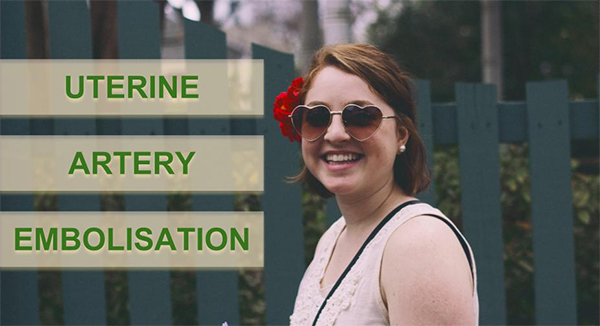WHAT IS UTERINE ARTERY EMBOLISATION
Uterine Artery Embolisation is a minimally invasive treatment for Uterine Fibroids. Fibroids are noncancerous growths in the uterus.
Uterine Artery Embolisation is also called Uterine Fibroid Embolization
WHAT CONDITIONS DOES THE UTERINE ARTERY EMBOLISATION HELP?
You might choose Uterine Artery Embolisation if you're premenopausal and you have from uterine fibroids that cause either
- severe pelvic pain or
- heavy bleeding
Women may choose Uterine Artery Embolisation to avoid the risks associated with surgery or to optimise their chances of a future pregnancy.
WHY IS THE UTERINE ARTERY EMBOLISATION REQUIRED?
Uterine Fibroids can cause severe symptoms in some women, including heavy menstrual bleeding, pelvic pain and swelling of the abdomen.
Uterine Artery Embolisation destroys fibroid tissue and eases these symptoms. And it provides an alternative to Myomectomy surgery to remove fibroids.
Studies show that even five years after treatment women enjoy reduced symptoms such as:
- Heavy bleeding,
- Urinary incontinence, and
- Abdominal enlargement.
WHO IS THE UTERINE ARTERY EMBOLISATION SUITABLE FOR?
Uterine Artery Embolisation is suitable for most fibroid sizes and locations, but extremely large fibroids may require alternative removal methods.
Patients should avoid the procedure if they:
- Are Pregnant
- At risk of pelvic cancer
- Suffer Chronic pelvic infection
- Suffer vascular disease
- Are allergic to contrast material containing iodine
Fibroids that have already lost their blood supply (degenerated), the procedure will not provide any benefit.
PREPARATION BEFORE THE UTERINE ARTERY EMBOLISATION
On the evening before the procedure, don't eat or drink after midnight or after whatever time your doctor advised.
If you're taking medications, ask your doctor if you should stop taking them before or after the procedure.
DAY OF THE UTERINE ARTERY EMBOLISATION
Your doctor uses imaging techniques to guide procedures that would be impossible with conventional surgery.
The procedure involves:
- Administration of anesthetics, antibiotics and pain medications.
- Fluoroscopic imaging to identify the uterus, blood vessels and internal structures and guide the surgeon
- A small incision in the skin over your femoral artery is used to insert a catheter into the artery and guides the catheter to one of the two uterine arteries.
- An injected contrast fluid flows into the uterine artery and its branches and makes them visible on the fluoroscope's monitor.
- The fibroids "light up" more brightly than other uterine tissue.
- Once the right area of the uterine artery is identified small particles are injected (embolic agents) to block the fibroid blood vessels, starving the fibroids of blood and causing them to shrink and die
IMMEDIATELY AFTER THE UTERINE ARTERY EMBOLISATION
Your care team monitors your condition and gives you medication to control any nausea and pain. Post Op pain usually peaks during the first 24 hours.
By the next day, your urinary catheter is removed, and you're encouraged to walk around. Recovery is generally rapid, and complications are rare.
Most women return home the day after the procedure with a prescription for oral pain medication.
WHAT SHOULD I EXPECT AFTER THE UTERINE ARTERY EMBOLISATION?
Most women get significant symptom relief in the first three months after treatment
Pain usually ends within a day or two, full recovery is complete within 7 days.
Vaginal discharge. You might have a watery or mucus-like vaginal discharge for a few weeks to a month. The discharge should stop without treatment.
In a few women, remnants of fibroids are passed through the vagina. Some fibroids that are primarily inside the uterus (pedunculated submucosal) may be expelled vaginally following the procedure.
STAGES OF RECOVERY AFTER THE UTERINE ARTERY EMBOLISATION
Follow-up exam within four weeks of the procedure to make sure there's no infection.
Your surgeon will usually schedule the first exam three months after the procedure.
Further monitoring using Magnetic Resonance Imaging (MRI) over the next year is normally scheduled to ensure shrinkage or other changes in the fibroids or your uterus are as planned.
POSSIBLE RISK OR COMPLICATIONS OF THE UTERINE ARTERY EMBOLISATION
Rarely, major complications occur in women undergoing Uterine Artery Embolisation. The risk of complications from Uterine Artery Embolisation is about the same as those for surgical treatment of fibroids.
While many women have healthy pregnancies after having Uterine Artery Embolisation, some evidence suggests pregnancy complications, including abnormalities of the placenta attaching to the uterus, may be increased after the procedure.
Patients
WHAT ARE THE ALTERNATIVES TO THE UTERINE ARTERY EMBOLISATION?
Uterine Artery Embolisation results appear to be comparable to Myomectomy, in which the fibroids are surgically removed and the uterus repaired.
WHEN TO SEE A DOCTOR
If you are suffer from Fibroids, experience severe pelvic pain or heavy bleeding or, are concerned about any gyneacological problem that may require further investigation, we would advise that you see your general practitioner and possibly obtain a referral to see Dr Gailani.
Dr Gailani can offer specialised help, advice on a possible diagnosis, further investigations and suitable treatment. Contact his rooms at www.omargailani.com.au







